String of challenges awaits refugee students in CCSD

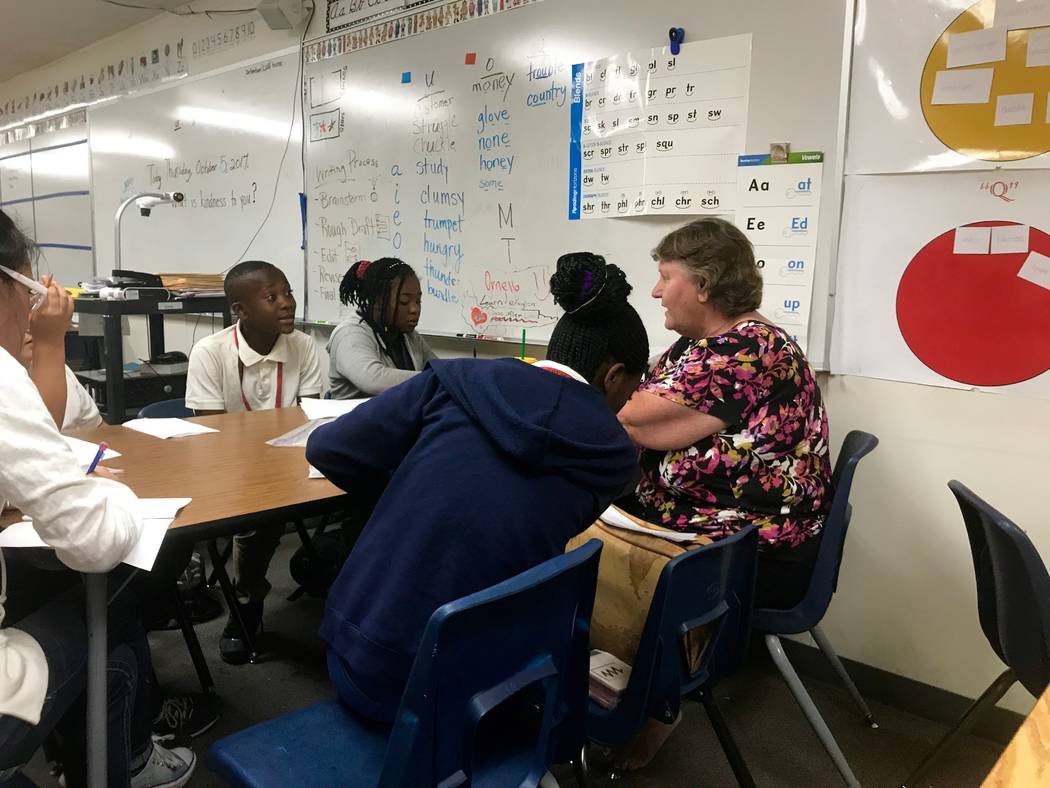
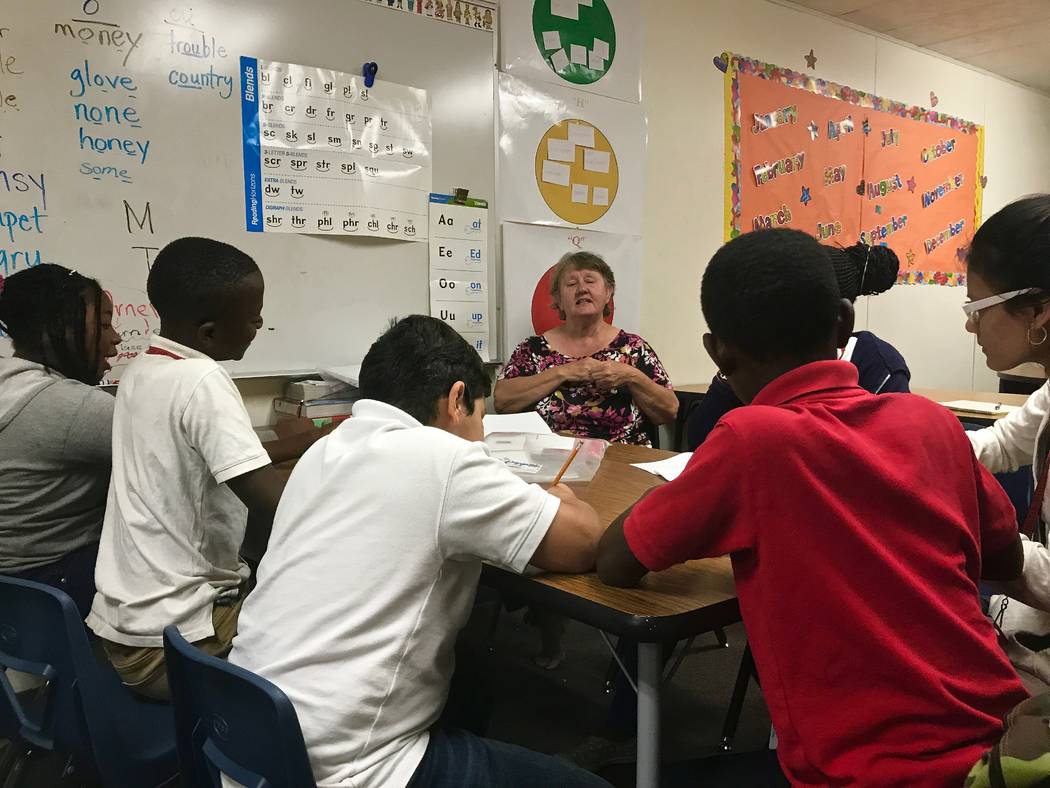
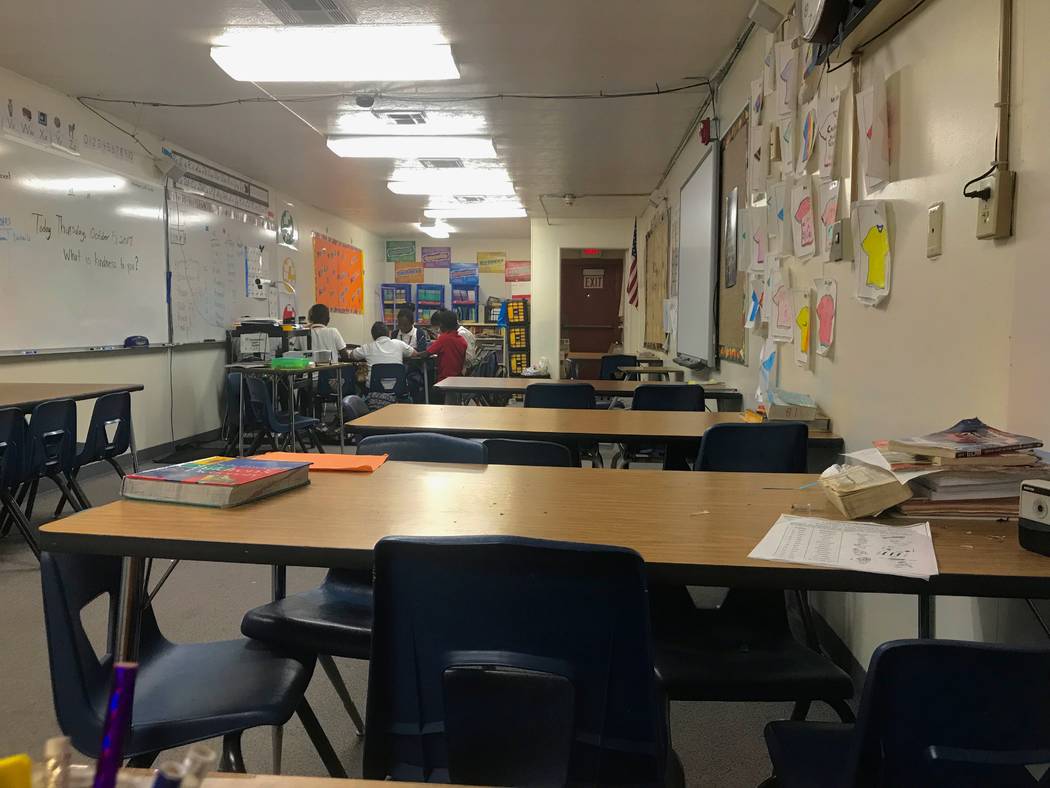
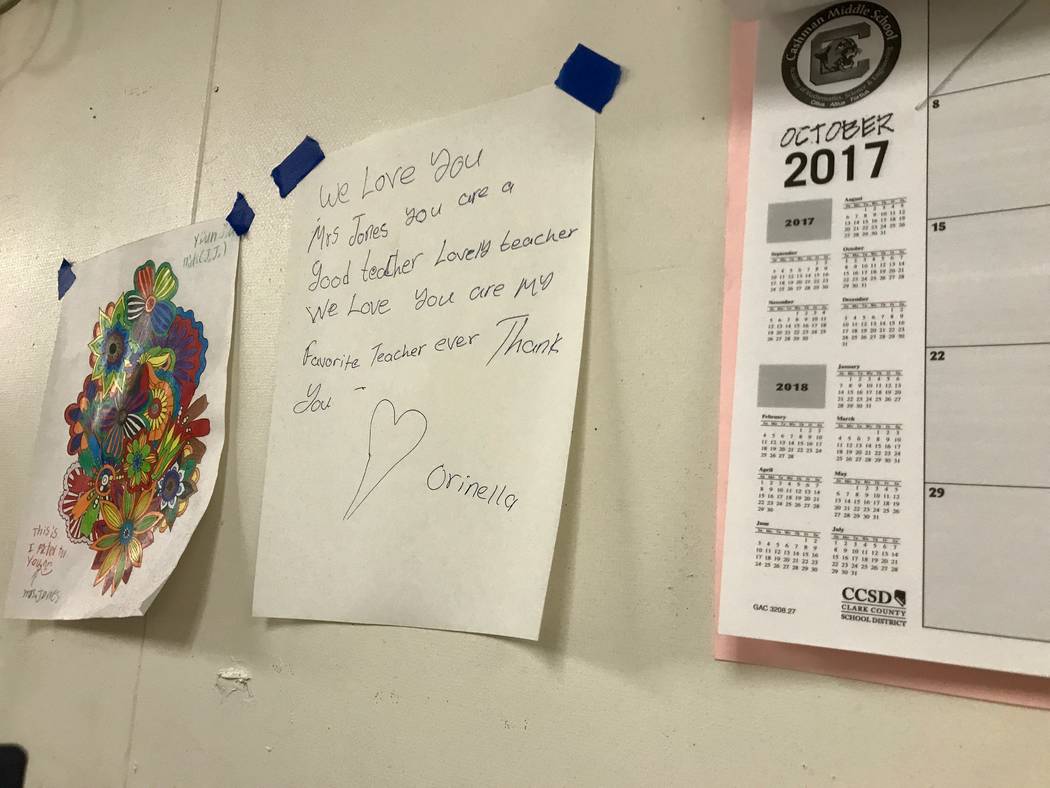
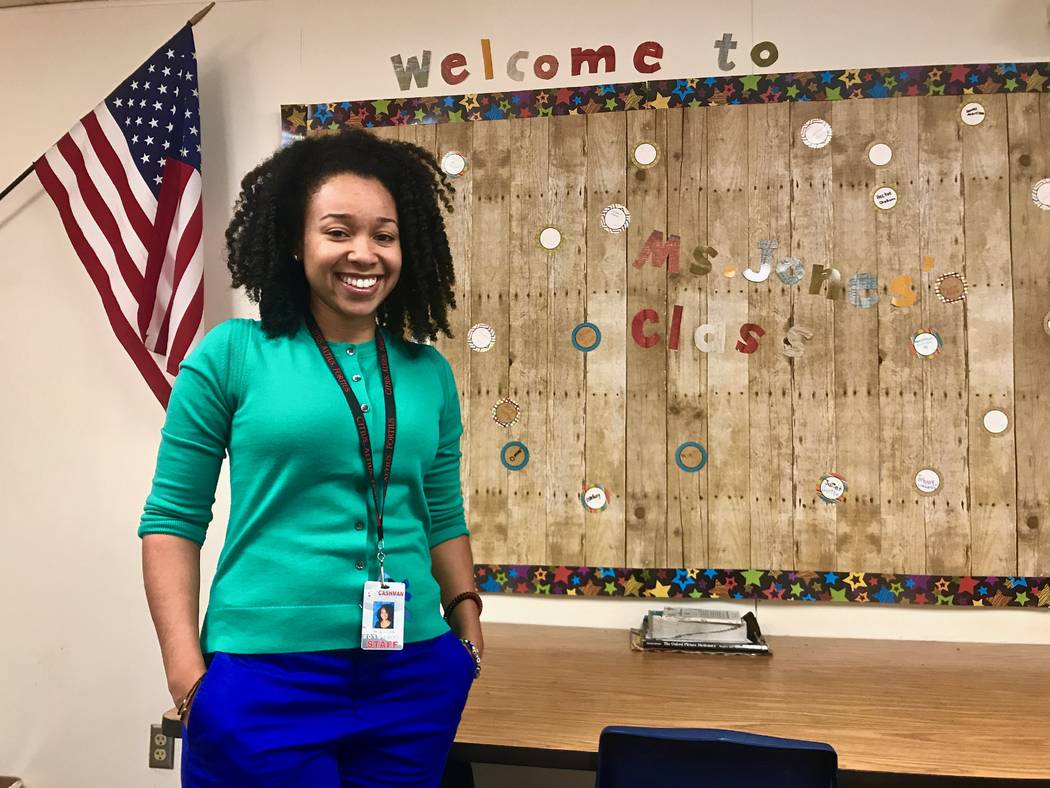
In a portable classroom behind Cashman Middle School’s main building, six students gathered around a small table and studied vocabulary.
Retired Clark County School District teacher Elizabeth Bash read a word aloud.
“Trumpet,” she said. The students began to write the word in their notebooks.
One looked at her quizzically.
“I’ll say it again,” Bash said. She slowly sounded out each syllable.
“What does that mean?” one student asked.
“How do you spell trumpet?” asked another student, Alembe Sango.
For Alembe and his classmates, English isn’t their first language. The group gathers for an hour twice a week after school with Bash to practice vocabulary, phonetics, letters and some grammar. That’s not uncommon: More than 60,000 students in CCSD are considered English-language learners.
But unlike those students, Alembe and his classmates are refugees who were resettled in the United States with their families. Alembe, Ornella Kabwe and Esther Karazega came from Congo. Another classmate, Ali Yekkalam, came from Iran, while a student to his right, Nau Mi Mi, was resettled with her family from Myanmar.
“I like to get a lot of talking going,” Bash said as the students wrote sentences with the provided vocabulary words. “Because it’s their chance to practice. You can see they don’t all speak the same language, so they have to practice. They have to learn a common language.”
Nearly 400 refugee students are enrolled in CCSD. They come to school with a variety of backgrounds, needs and personal histories, and it’s up to the district to get them up to speed. They have to learn English, learn American culture and ultimately prepare to graduate high school. They face a long and difficult road.
Graduation has proved elusive for English learners in Nevada. In 2016, the state’s public high school graduation rate rose more than 2.5 percentage points to 72.6 percent, but students whose first language is not English graduated at a rate of 42.6 percent.
“It’s very true that no one refugee family is like the other. There’s a lot of subcategories,” said Ignacio Ruiz, CCSD’s assistant superintendent of the English Language Learner Division. “You’re not only looking at diversity in demographics, but also in their preparation for school. We have kids who have received very good education before they come here to kids that may not have had a chance to attend school.”
That creates a lot of questions for teachers and administrators. How do you communicate with a parent who doesn’t speak English? How do you begin to teach a student who doesn’t know how to write in his or her native language? How do you relate to a student whose life so far is so very different from your own?
Life for refugee students
Once refugees arrive in the United States, the clock starts ticking. Before they even board a plane to their U.S. destination, their case will have been assigned to a resettlement agency. Within the Las Vegas Valley, the case will go to either Catholic Charities of Southern Nevada or the African Community Center.
A staff member meets the individual or family at the airport and brings them back to an apartment with a prearranged lease. They’ll have a meal waiting for them and go to bed. The work starts the next day.
The services provided by the agencies are funded largely by federal grants, so everything is governed by strict rules and deadlines, said Milan Devetak, resettlement director for Catholic Charities. Adults must be enrolled in an English-language program within 10 days of arrival, and students must be enrolled in school within 30 days.
“No time is wasted; you know, you kind of have to work fast,” Devetak said. “So once we take care of some of those basic needs immediately, make sure they have clothing and food, then we take (the kids) … for their health screening,” as well as immunizations.
Then the agencies contact Ouiza Weber, CCSD’s Refugee School Impact Grant coordinator. She’s the link between the family’s case manager and the school.
“We try to provide as many services as possible,” Weber said. She takes the kids shopping or provides a backpack full of school supplies. If a school requires a uniform, she arranges that. The English Language Learner department is also responsible for ensuring that tutors like Bash are there to provide after-school English lessons.
The services don’t stop with the child. The department also arranges for interpreters to communicate with parents.
“Our efforts are designed to build bridges between school, parents and communities (and) to facilitate communications that are normal for any other family,” Ruiz said. “We try to bring equity.”
Ruiz said that more often than not, he sees families that will “do whatever it takes for their child’s success.”
Why refugee enrollment varies
Certain schools have higher populations of refugee students than most others in the district, such as Valley High and Thomas Elementary, along with Snyder Elementary and Cashman, said refugee grant coordinator Weber.
The district doesn’t keep exact numbers because there is a high rate of transiency, Weber said.
Some schools end up with higher populations of refugee students because the resettlement agencies have relationships with specific apartment complexes. Apartments need to be affordable, as well as close to public transportation and shopping centers. If the agency is working with a family, the housing should be close to a school, too.
And then, of course, the complex has to be willing to work with the resettlement agency. Not all of them are.
“I can understand why,” said Devetak, at Catholic Charities. “They can’t really do (background checks) with our clients because they’re not here yet. We’re grateful to complexes that understand the nature of our work.”
ELL teacher Dena Jones, who has been at Cashman for eight years, said she has seen groups of refugee students form tight bonds as a result of spending so much time together at school.
One group included students from China, Iraq, Iran and Malaysia. That was several years ago. She still sees them from time to time and keeps in touch. Now they’re seniors.
“That group of students carried each other throughout high school,” Jones said.
Looking ahead
Challenges for students vary, but one still plagues newcomer students more than most: graduating on time. The district is doing what it can to help get students across the finish line.
CCSD is two years into its five-year ELL master plan, which is aimed at weaving English-language-learning skills into every classroom and overhauling the previous ELL program.
But then there are the refugee students who arrive in high school. Most “age out” before they complete their diplomas. There’s the option of moving to the district’s adult education program, but the district is looking into alternatives.
“We know that if you come in as a junior, you’re not going to graduate in two years,” Ruiz said. “Within the (master plan) part of that is to look at ways to give kids an opportunity to extend that time given to them … The reality is that they need more time.”
Contact Madelyn Reese at mreese@viewnews.com or 702-383-0497. Follow @MadelynGReese on Twitter.
Definitions
Refugee: “A person forced to flee their home country to escape persecution, war or violence: – United Nations High Commissioner for Refugees
Resettlement: The careful selection by governments such as the U.S. — for purposes of lawful admission — of vulnerable refugees who can neither return to their home country nor live in safety in neighboring countries.
Key dates
About three million refugees have been resettled in the United States since Congres passed the refugee Act of 1980, according to the Pew Research Center.
From 1990-95 an average of 112,000 refugees arrived each year.
That number dropped to fewer than 27,000 in 2002 following 9/11.
The United States admitted nearly 85,000 refugees in fiscal year 2016. This was the most of any year during President Barack Obama’s administration. Obama had aimed to resettle 110,000 refugees in 2017, but that was revised when President Trump established a 50,000-person cap in his travel ban executive orders.












